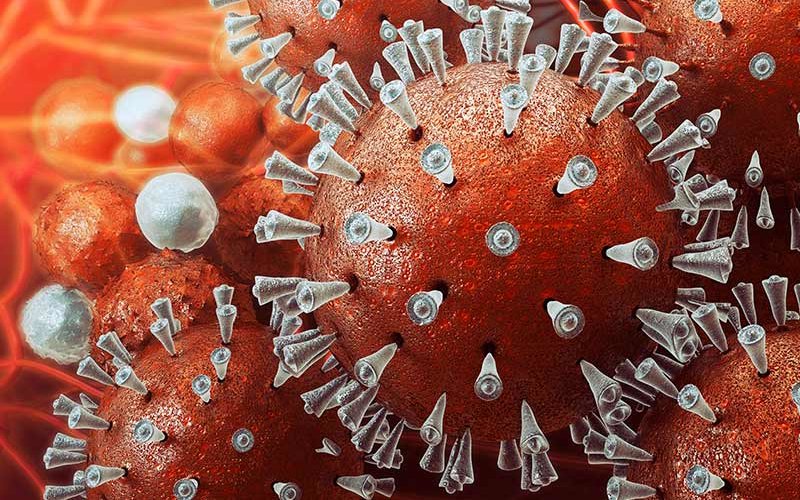
As the new coronavirus from China continues to spread, claiming hundreds of lives and infecting thousands, Cal State Fullerton biochemist Marcos E. Ortega studies how viruses replicate and cause infection — and seeks answers for possible treatment.
“Through my research with my students, we’re trying to understand viral infections and viral replication using biochemical techniques,” said Ortega, assistant professor of chemistry and biochemistry.
Coronavirus, what scientists call 2019-nCoV acute respiratory disease, was first reported from Wuhan, China, on Dec. 31, 2019, and has since spread outside of mainland China, including to the United States. Coronaviruses (CoV) are a large family of viruses that cause illness ranging from the common cold to more severe diseases such as Severe Acute Respiratory Syndrome (SARS-CoV).
The novel coronavirus (nCoV) is a new strain that has not been previously identified in humans, according to the World Health Organization. Coronaviruses are zoonotic, meaning they are transmitted between animals and people.
As a scientist, what is your reaction to this new virus?
My professional reaction to the new coronavirus is that we should always ensure caution, while also limiting overreactions so as not to panic the general public. In science, we need data to determine the best path forward and to determine the best outcomes. This means we need to be cautious to limit the exposure and health impacts, but we also need to study the virus more robustly to gauge the long-term dangers. As a scientific community, we need to build on previous research, while expanding new research, to better understand the level of threat.
How does the coronavirus relate to your research?
I study double-stranded DNA viruses in my lab. The new coronavirus is an RNA virus. While they are different types of viruses, and their mode of infection and replication is thus different, the overall goal with all viruses is the same. We want to understand how viruses gain entry into the cell, how they multiply once inside the cell, and how they promote release from the cell to cause further infections. While the targets will change depending on the class of virus, the overall goal to prevent viral infections is similar across the classes.
What is the focus of your research with students?
The research in my lab focuses on understanding and preventing how a virus forms from biomolecules, so that we can prevent viral formation. We seek to understand how a virus assembles in the cell so that we can begin to develop therapeutics that can inhibit viral assembly and prevent infection of other cells. Students in my lab study different parts of the virus, including the capsid, or head, of the virus and also the enzymes that assemble the complex structures that make up a virus. A new project in my lab, in collaboration with a Stevan Pecic, an assistant professor of chemistry and biochemistry and medicinal chemist, is focused on identifying inhibitors of viral assembly.
What do you hope to learn by studying viruses?
The importance of studying viruses, like any other infection or disease, is to answer complex questions about how biochemical processes occur. We need to understand how chemistry, biology and thermodynamics meet in a biochemical process to produce an outcome. If we can better understand these complex processes, we can start to formulate treatments. The things we hope to learn are the common underlying principles that guide viral infections so that we can target these processes. When the SARS outbreak occurred in 2003, scientists identified the mode of entry into the cell and began to develop drugs to prevent entry into the cell. With the new coronavirus, scientists can potentially look for similar functions, since the viruses come from the same class, and begin to develop potential therapeutics.
What other challenges are scientists facing in studying viruses like the coronavirus?
With viral outbreaks, like the coronavirus, which is spreading so quickly, we must first establish how it’s passed from person to person — through the transfer of body fluids or air like coughing and sneezing, and from contaminated surfaces. Once it is established how a virus is passed, then we must look for targets to prevent infection from occurring and study the virus genetically and biochemically to find these targets. The complexity of biomolecules make studying and preventing viral infections a challenge. Viruses are constantly evolving, and thus, are a moving target. We will never find the answer to all questions, but it is important that we keep asking these questions and do research in labs, regardless of the frustrations and failures.